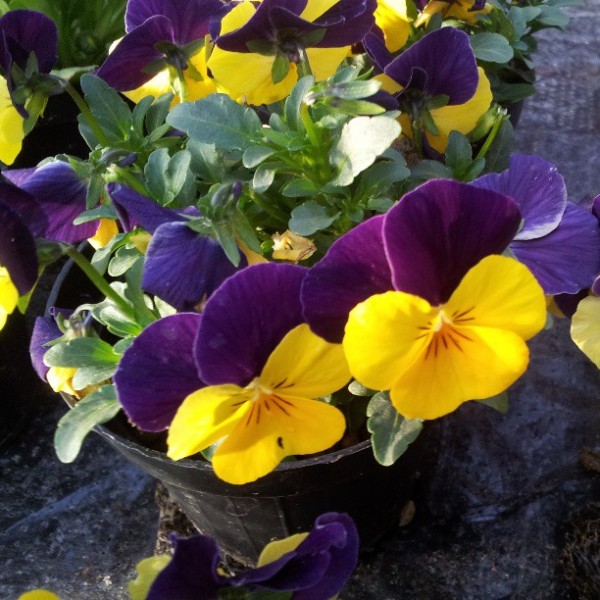
There viola tricolor It is an ornamental herbaceous plant cultivated for ornamental purposes in pots, for flower beds and borders in the garden due to its prolonged flowering.

Viola tricolor is a plant that heralds spring that is easy to grow both in open ground and in pots.

Read also: Violet violets – Viola odorata cultivation
General characteristics Viola tricolor
There viola tricolor it is native to Europe and belongs to the Violacee family.
It is a plant about 10-40 cm high with a bushy habit with a small but robust taproot from which thin herbaceous stems covered with elongated and leathery bright green basal leaves originate.
The leaf page is glabrous with a slightly toothed margin.
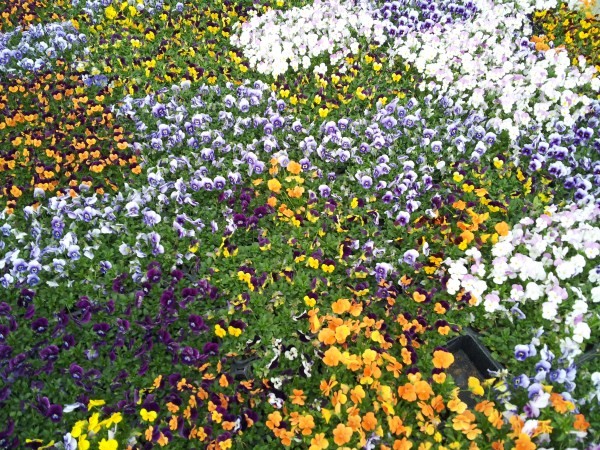
The stems erect and threadlike they bear characteristic flowers of about 1.5 cm which in the hot season produce small gray-blackish seeds.

Flowering
The Viola tricolor blooms in the period from April to September.
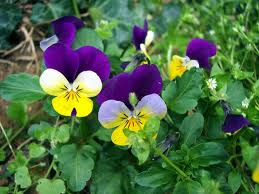
Cultivation of the Viola tricolor
Exposure
It is a plant that loves bright sunny or partially sunny places. Grown in full shade, it produces only leaves and very few flowers.
Ground
even if it adapts to all types of soil, even the common one in the garden, it prefers the acidic, soft and well-drained one.
Watering
It needs regular and constant irrigation during the flowering period, during periods of prolonged drought and in summer, taking care not to wet the leaves and water stagnation.
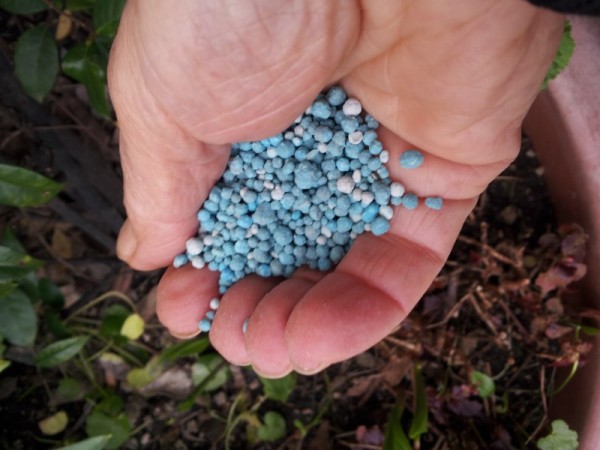
You may be interested in: Pansy cultivation
Fertilization
To stimulate flowering and the regrowth of new leaves, in spring it is advisable to fertilize the plant by administering a good quantity of granular fertilizer for flowering plants to the foot of the head or liquid fertilizer diluted in watering water, every 20 – 25 days. , in order to enrich the soil with nutrients. The ideal fertilizer must contain nitrogen and potassium.
Viola tricolor: cultivation in pots
It is a plant that is easily cultivated in pots, especially in regions with a very harsh winter climate and to see it bloom in spring, it must be sown in autumn. The pot, preferably in terracotta, should be drained on the bottom with expanded clay balls and then filled with fresh, loose soil rich in mineral salts. In a 30 cm diameter pot, 3 Viola tricolor plants can be planted at a distance of 10 cm from each other. After the planting, the pot should be placed in a bright place and for healthy growth and for the flowering to be optimal, it is advisable to add a fertilizer diluted in the watering water every 20 days.
Repotting
Repotting should be done at the end of winter using a larger container than the previous one, new soft, light, fertile and well-drained soil, mixed with a part of sand to facilitate water drainage.
The plants should be removed from their container with delicacy and buried in holes that are twice as wide and deep as the bread of the earth. The soil is compacted up to the collar of the plant and finally watered in moderation.
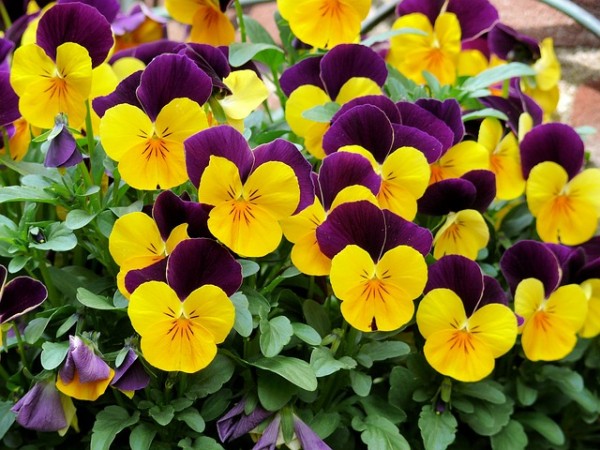
Multiplication Viola tricolor
The viola tricolor multiplies by seed and by division of the tufts.
Sowing
Sowing takes place at the end of summer to have flowering from the end of the following winter.
The seeds must be stratified on a mixed substrate and then covered with a light layer of sand. The seedbed must be moistened and then covered with a transparent plastic sheet useful to keep the humidity of the soil constant and the germination temperature required by the seeds (18 ° C). Once germination has taken place, the plastic sheet is removed and the shoots are left to strengthen before transplanting them into a permanent home.
Propagation of tufts
Plants grown as biennials are propagated by division of the tufts at the end of flowering.
Planting or planting
Planting is carried out when the seedlings have a fairly robust root system. The transplant must be carried out a few cm deep, in holes about 10-15 cm apart
Pairings
To further enhance the beauty and elegance of the tricolor viola, you could consider combining the plants with other spring flowering plants such as: freesias, daffodils, tulips, hyacinths, muscari.
Topping
The withered leaves must be eliminated gradually to prevent them from being a vehicle for fungal diseases.

Pests and diseases of the Viola tricolor
The viola tricolor fears powdery mildew or white sickness and the attack of aphids or lice. Among the fungal diseases it suffers from root and collar rot caused by water stagnation.
Cures and treatments
The viola tricolor needs little care: water stagnation in the ground and in the saucer must be avoided.
Treatments with specific products should be carried out only in case of actual need. Aphids can be combated by spraying the leaves with the nettle pesticide or the garlic pesticide, which do not kill bees and do not pollute the environment.
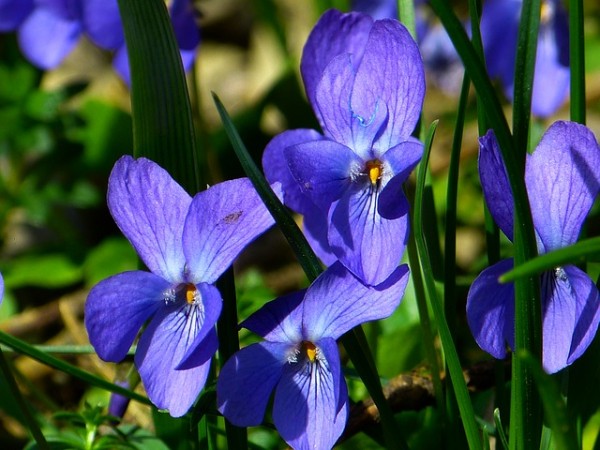
Variety of viola tricolor
There are about 400 annual and perennial species that differ from each other in height, shape of the corollas and chromatic variations. Among the species of viola belonging to this genus we remember the most widespread and cultivated in our territory.
Pansy
An annual or at most biennial cycle species, cultivated in all gardens for its resistance to the harsh cold. It forms tufts with about 15 cm high stems with oval and toothed dark green leaves. Pansy produces beautiful blooms between June and July. The flowers have petals that fade from purple to cream, including blue and purple.
Viola cornuta
The most cultivated viola in pots and in gardens. In the period between March and June, it produces small flowers with a corolla about 3 cm wide.
Viola tricolor arvensis
A small annual or biennial herbaceous plant. It has alternate leaves, ovate and with a toothed margin. During the flowering period, in spring and autumn, it produces solitary flowers, very large and long petiolate with a corolla consisting of 5 white petals. The fruit is an oval capsule.
Viola tricolor vulgaris
a species that differs from viola tricolor arvensis in producing large deep purple flowers.
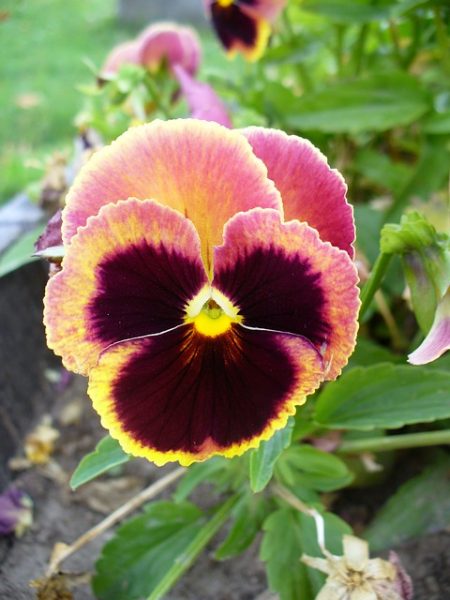
Properties and Uses
The flowers of the viola tricolor for the richness of active principles such as saponins, flavonoids, carotenoids, tannins, flavonoids, are used as purifying agents, expectorants, diuretics and analgesics.
The infusion of this beautiful flowering plant is very effective as a skin purifier, in fact it is indicated in skin diseases of children (cradle cap), acne, atopic dermatitis, bronchitis and joint rheumatism.
In gardening, viola tricolor plants are widely used in pot cultivation on balconies and terraces and in the open ground to create splendid flower borders in garden beds and as furnishing elements in urban roundabouts.
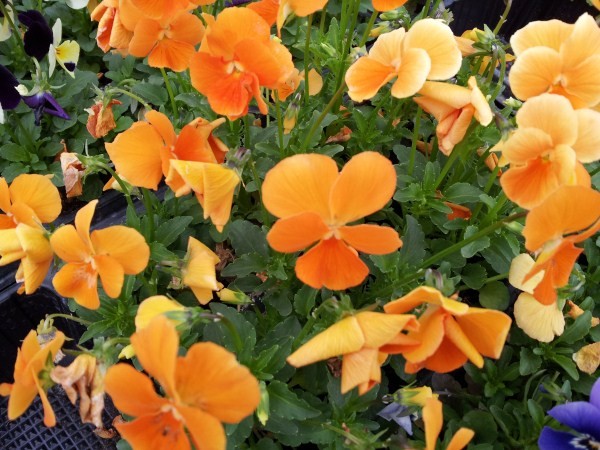
Meaning of the viola tricolor
In the jargon of plants it takes on the meaning of luck on the way.
Is viola tricolor poisonous or edible?
It is an edible flower used by many chefs to embellish dishes or as a base for salads. It therefore belongs to the category of edible flowers.
Curiosity
The viola Viola tricolor is one of the symbols of the Trinity: the three different colors represent the three separate but indissoluble divinities.

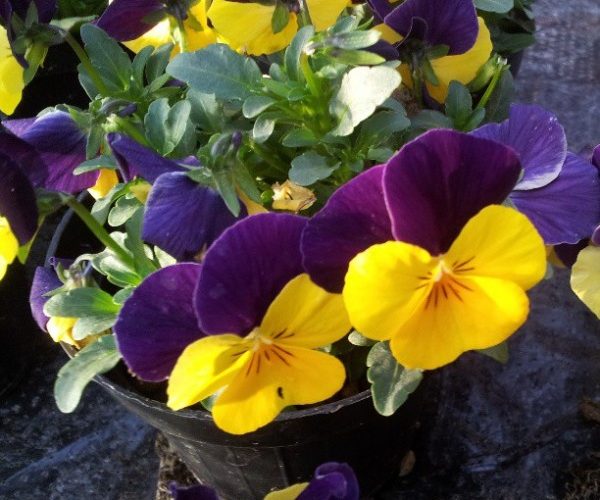

Add comment